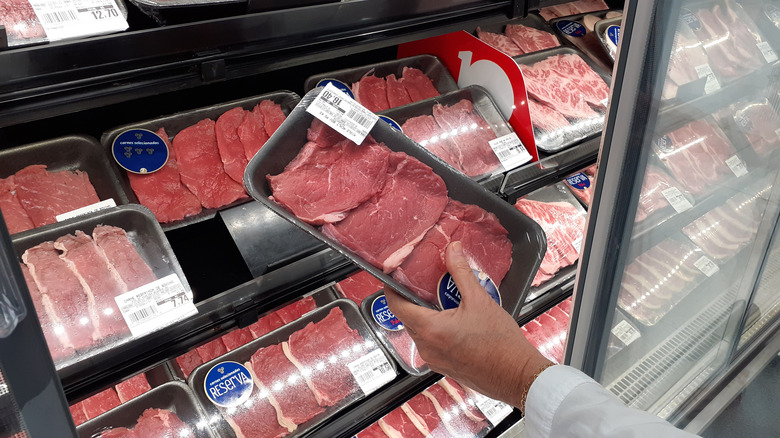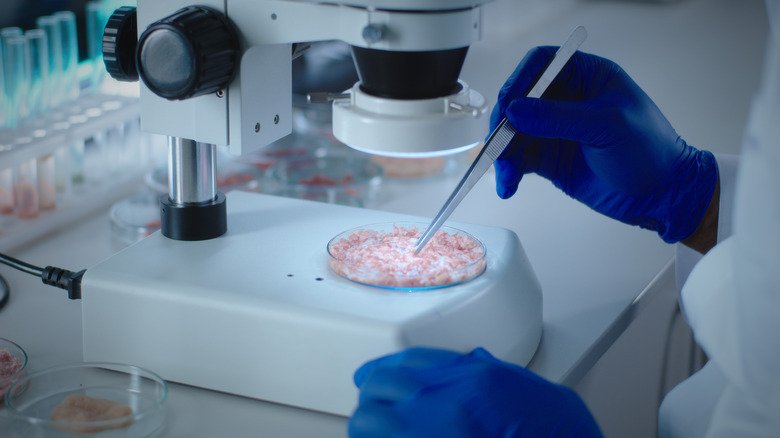Why Food Labels Have Consumers Asking Where The Meat Is
Technology is growing in the food industry, and we don't just mean robots taking fast food orders. It's also shaping what foods we can eat. Cell-based cultivated meat was introduced in 2013 by Dutch scientist Mark Post, according to The Guardian. The pharmacologist utilized 20,000 muscle fibers from a cow that were carefully grown into the shape of a hamburger.
Environmental factors were what drove the scientist to make this alternative, high-tech form of meat. EarthSave states that 2,500 gallons of water and 12 pounds of grain are just a few of the many components needed to produce one pound of feedlot beef. The production of cultivated meat uses significantly less of those resources, but that doesn't mean there isn't some drawbacks, including its initial high costs — a pound of cultivated chicken cost as much as $7.70 at one point (via New Atlas).
As cultivated meat continues to spread throughout the food market, it has caused some more controversy, including how it's labeled in stores.
Cultured meat has to be labeled differently
One major point of discussion is where lab-grown meat fits into the food world, specifically the cattle and poultry industry. In September 2021, the USDA asked stakeholders for information about how to label cell-based meat products. According to Food Dive, the general consensus among the 1,179 respondents was that this new innovation should not be grouped with the products of traditional animal agriculture.
Some people felt this way because cell-grown meat is not created in the same way as conventional animal products. The North Dakota Farmers Union stated that "Allowing products comprised of or containing cultured animal cells to be labeled 'meat' or 'poultry' would place family farmers and ranchers at a disadvantage because it will be difficult for them to differentiate their products from cultured animal cell products." In a LinkedIn post, Michele Simon, founder of the Plant Based Foods Association, shared this sentiment, but for different reasons. Simon states that cultivated meat should be separated from the term "cultivated" and called something else, such as "cell-based," to distinguish that it's not made from live animals. Simon cites a study in the Journal of Food Science that found that the term "cultivated" only confused customers, who often equated the word to "farm raised."
Therefore, while it was agreed that cultured meat fell into its own category, industry stakeholders remain divided over how to label this new innovation.

